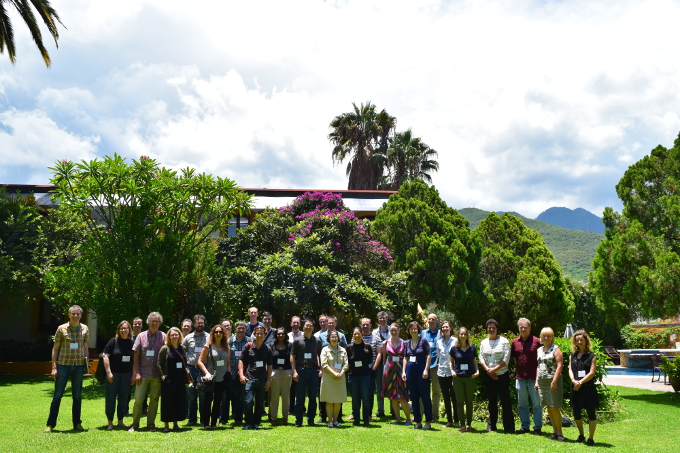Quantitative Analysis of Immune Cell Migration and Spatial Processes in Health and Disease (18w5153)
Organizers
Judith Mandl (McGill University)
Rob de Boer (Utrecht University, Theoretical Biology & Bioinformatics)
Johannes Textor (Radboud University Medical Center)
Description
The Casa Matemática Oaxaca (CMO) will host the "Quantitative Analysis of Immune Cell Migration and Spatial Processes in Health and Disease" workshop from June 24th to June 29th, 2018.
Much of what we know about the immune system has come from studying immune cells that were harvested from organs and put into single cell suspension to probe their function. However, immune cells are highly motile and their migratory behaviour has a large impact on immune responses during health and disease. Understanding the complex choreography of immune cells, and the impact of that their migratory behaviour, is only now beginning to become accessible to study, as recent advances in microscopy enable us to film the behaviour of individual immune cells within live animals. Such videos hold critical information on how cells talk to each other, how tissue structure influences immune cell behaviour, and how infections or tumours impair cell migration. The desire to understand the motion of immune cells, and how it influences immune responses, has brought together mathematicians, physicists, and immunologists, who have recently begun to address these exciting questions in a cross-disciplinary effort. This BIRS conference will bring this emerging community together to work on newly emerging problems in this field.
The Casa Matemática Oaxaca (CMO) in Mexico, and the Banff International Research Station for Mathematical Innovation and Discovery (BIRS) in Banff, are collaborative Canada-US-Mexico ventures that provide an environment for creative interaction as well as the exchange of ideas, knowledge, and methods within the Mathematical Sciences, with related disciplines and with industry. The research station in Banff is supported by Canada's Natural Science and Engineering Research Council (NSERC), the U.S. National Science Foundation (NSF), Alberta's Advanced Education and Technology, and Mexico's Consejo Nacional de Ciencia y Tecnología (CONACYT). The research station in Oaxaca is funded by CONACYT.






